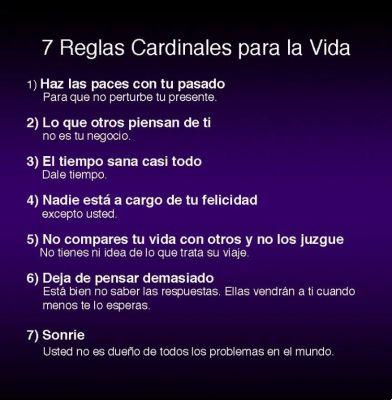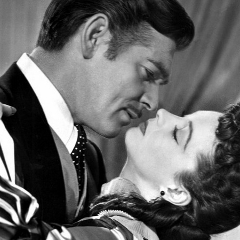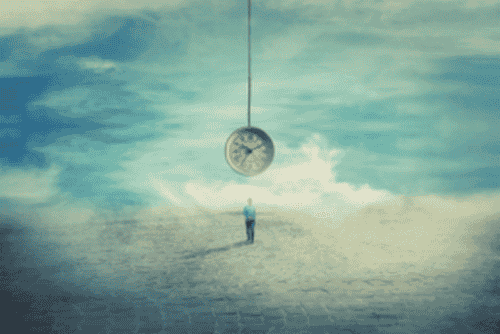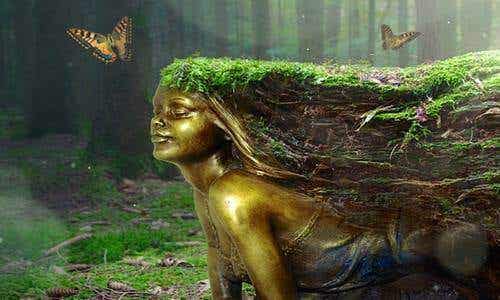Find out what it is that makes a human being a true warrior, let yourself be inspired by this archetype and learn how to make it emerge in your life.
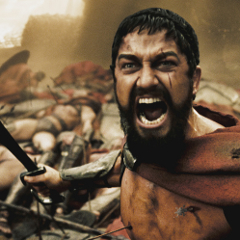
"You become a warrior the moment you take full responsibility for your life."
D. Millman.
This is the second post of a miniseries of articles dedicated to archetypes of the adult human being. If you haven't done so yet, I strongly recommend that you read theintroductory article, which explains the model of the archetypes, the origins and its importance for your maturation process. After reading the various in-depth articles on the individual archetypes, don't forget to do the test to discover your dominant archetype.
Let's see today in detail the first of the 4 archetypes of the adult human being: the archetype of the Warrior. This archetype plays a very important role in your personal growth and, despite traditional suggestions, it has little to do with battles, bloodshed or sinister machismo; on the contrary, this archetype embodies qualities such as discipline, endurance and the ability to pursue one's goals with determination.
Let's start immediately with what have been the interpretations of this archetype in the most important human traditions and cultures.
The archetype of the Warrior: from the Spartans to the Amazons
The myth of the warrior is present in the culture and in tradition of the most important civilizations of the past. In ancient Greece, the Spartans they were considered exceptional warriors, selected and educated from birth to excel in the art of war. Characters such as Leonidas and his 300 leaders have entered the myth and have inspired dozens of writers and directors. We cannot forget the ancient Japanese warriors: i Samurai. Devoted to their Daimio, the Samurai devoted their entire existence to disciplined practice and to those noble principles that are well photographed in theHagakure - the secret book of the Samurai.
The archetype of the Warrior has been embodied several times in the course of history also by the female gender. Among the best known warriors there are undoubtedly the Amazons, dating back to Greek myths. But much more interesting are some single figures that have brought prestige to the female Warrior archetype: Ah-Hotep, the warrior queen of Ancient Egypt; Fu-Hao, queen of the Shang dynasty, who led an army of more than 13.000 soldiers in China as early as 1.200 BC; and finally Giovanna D'Arco, the girl of humble origins, who in the fifteenth century came to fill roles of the highest level within the army of a nation like France.
The Warrior archetype has always been an integral part of human history, but how can it become part of your history?
The child archetype: the Hero
As seen, in Moore's model of the 4 archetypes, it is not possible to access the adult archetype if the child archetype has not developed first. In the case of the Warrior, the child archetype is that of theHero.
In a normal maturation path, the Hero archetype manifests itself in adolescent age. In this period we feel the need for greater independence and we try to test this need by facing risky and frightening situations. Parents, out of an innate sense of protection, try to oppose these adolescent needs, but deny these sometimes risky but certainly positive rites of passage (a trip abroad alone, a trip with friends, etc.), it often leads children to take refuge in much worse rites of passage with negative connotations (smoking, alcohol, etc.).
Therefore, if this search for independence is not correctly channeled, it can lead to what we have defined as the shadows of the archetype:
- On the one hand we have the Bully. In wanting to assert his independence, the bully tends to bully others, from whom he demands respect through physical and verbal violence. In reality, behind every bully there is an insecure teenager with low self-esteem, who relies on his weaker peers to hide his inadequacy.
- On the other hand we have the Coward. Unable to face his fears, he continually avoids confrontation, be it physical or verbal. The Coward always follows the instructions of others and adapts to the choices of the majority, even in terms of fashion and behavior. While continually rationalizing his lack of courage, the coward feels a deep anger and hatred towards himself.
The archetype of the Hero can therefore be matured only through a healthy affirmation of one's independence; this can happen in 2 ways:
- Initiation rites that allow the adolescent to independently overcome their fears. We are not talking about bitches like hot coals or anything, but about real assumptions of responsibility by a boy (or a girl of course), such as: a summer job, a trip earned thanks to one's commitment, a sporting path at a competitive level, an off-site university course.
- A daily practice that solidifies theesteem adolescent. Self-esteem is not innate, it must be built, day after day. Self-esteem comes from the ability to face at least one small fear of ours every day. From this point of view, the technique that I think is the most effective is the "as if" technique.
Now that you know what it is that makes a guy a Hero, the time has come to find out what distinguishes a real Warrior and how you can make these traits a part of your adult personality.
The adult archetype: the Warrior
The archetype of the warrior (or of the Amazon) integrates in itself a precise of mix of features. Read them carefully, absorb them, let them inspire you and produce images in your mind that you can use in moments of greatest need. The purpose of an archetype is precisely this: to be a source of inspiration.
- Courage. Courage is not the absence of fear, but rather it is its acceptance. The Warrior faces his own fears, aware that by shunning them they become magnified and acquire power. In short, the Warrior is aware of that mechanism known as mental domino.
- Discipline. Discipline is the ability to do what you have promised yourself, despite external and internal conditions. The warrior, from a young age, trains the "muscle of discipline". This muscle grows in the daily choices he makes, whenever he prefers practice to idleness, commitment to apology and action to procrastination.
"There is no greater conqueror than one who has managed to conquer himself."
H.W.Beecher.
- Determination. The warrior is focused on his goal and is not tied to any particular path. When he realizes he has chosen the wrong path he leaves it without hesitation, to try a new path. The warrior is aware that failure is not a sign of divine persistence, but rather a necessary condition for reaching the final goal.
- Concentration. The ability to focus on the essential is one of the salient features of the Warrior. Not only that, the Warrior is a real master in terms of mental focus; he knows that constant distractions take him away from his goals and for this reason he practices daily concentration techniques.
- Expertise. The confidence the Warrior displays in the "battlefield" comes from his profound competence. Years of deliberate practice have given the Warrior the confidence to face any enemy without an inferiority complex.
- Aggression. The Warrior is aggressive. Having trouble with the word aggression? Get over them. Aggression is a neutral tool and indicates the energy that is used to achieve a certain goal. Aggression can certainly be negative, but the warrior uses positive aggression to push himself to the limits of his comfort zone. As I wrote in the past, if you want to achieve your goals, you have to put in healthy aggression.
- Emotional detachment. In battle, the Warrior must be able to detach himself from emotions, doubts and fears. Detaching from them does not mean not trying them. The Warrior has learned to observe these "thought toxins" without allowing them to influence their judgment or action. This can be achieved through a constant meditative practice.
- Loyalty. Unlike the Hero, the Warrior responds not only to himself, but to a higher entity (the King, the Country, God); but above all the Warrior believes in a cause and principles that go beyond personal affirmation. The Warrior's loyalty must therefore be interpreted as a denial of the hero's self-centered thrusts and not as blind obedience.
- Resilience. Resilience is the human capacity to deal positively with traumatic events. The Warrior is by definition resilient. He gets up with each defeat, continues to fight relentlessly, is focused solely on his goal. It is no coincidence that in Trabucchi's text, dedicated to resilience (I resist therefore I am), many examples of modern warriors are found.
In short, our Warrior is a nice chap, huh? But as Moore teaches us, each archetype has its shadows to deal with ...
The shadows of the warrior
An incorrect maturation of the Warrior archetype can lead to the development of incorrect behavior patterns, in which the salient features of the Warrior are distorted and sometimes led to excess. The Warrior can thus be transformed into:
- Sadistic. Emotional detachment is one of the hallmarks of the Warrior, but this should only apply while the Warrior is in "battle". When emotional detachment, ineffectiveness and hatred for the weakness of others become constant in the Warrior's life, he becomes a Sadist, who, as the name recalls, is also capable of acts of incomprehensible cruelty.
- Masochist. On the other hand we have the Masochist, the one who sacrifices himself to a cause that does not belong to him: he is the classic mouse in the wheel that instead of freeing himself, he runs like a madman into his trap, constantly seeking the approval of his King (the boss, the partner, etc.).
So let's see how to avoid the shadows of the Warrior archetype and instead correctly develop the characteristics outlined above.
Practical actions to become a Warrior
There is no standard recipe for maturing the typical skills of the Warrior, but there are nevertheless practical actions that you can take to absorb as much as possible these patterns of behavior and thinking.
- Get inspired. Archetypes act on our unconscious mind, and what's better than a book or a movie to get inspired? Watch or relive films like Gladiator, Braveheart, The Last of the Mohicans, the Last Samurai. Yes, it may sound like a cliché, but damn it: it works. Among the books I recommend "The way of the warrior of Peace" by Dan Millman, or the treatises of the philosopher-warrior Marcus Aurelius.
- Face your fears. Fears are exceptional tools for personal growth. Each time you run away from them, they gain strength and confine you to an increasingly narrow enclosure, which risks suffocating you; but you should see what happens if you face them openly, if you throw yourself at them: those same fears suddenly dissolve. It is in this exact moment that you solidify your self-esteem, that you begin to believe in yourself and to have the strength to face ever greater fears. Make a list of what scares you, what you avoid like the plague. Then take the more "manageable" fear and face it: not tomorrow, but today.
- Train. Physical activity not only helps you get back in shape and regain your ideal weight. These are only secondary effects. Physical activity tempers you like a true warrior. In sport, in order to grow, you are "forced" to set yourself goals, to train constantly to achieve them and to face injuries from time to time. These lessons are worth more than a thousand articles. If you have no idea where to leave, I recommend this simple one training program.
- Find your life purpose. A warrior is always devoted to a cause greater than himself. It has clear principles and values, which it respects, whatever the cost, but above all it never loses sight of its ultimate purpose. If you want to absorb the Warrior archetype you have to find your cause, your ultimate purpose. Of course I don't have all the answers, but I can suggest you this method as a starting point in your research.
- Test your resilience. There is no Warrior who has not been forged by difficulties. My suggestion is certainly not to go and look for useless and empty challenges, but you must learn to accept the roughness of life with a new mental attitude. Don't let anything get you down or scratch you: be the one to choose your reactions. In this it can certainly help you to apply consistently the ABCDE technique to strengthen your resilience.
- Practice discipline. As mentioned, discipline is the ability to accomplish what we have promised ourselves to do. To acquire the discipline of a warrior you must learn to work on your habits: eliminate bad habits, learn to form new habits effectively, but above all work on your ability to be constant. Life is a marathon and not a 100m sprint, take the right pace and don't stop.
- Adopt a meditation practice. Whether it is actual meditation or simple breathing techniques, set aside at least 20 minutes every day to devote to the practice of emotional detachment. Observe the thoughts that have haunted you throughout the day, watch them as you would watch a movie on the cinema screen: distant and separate from your deepest self. A warrior, before he can defeat his enemies, must be able to dominate his inner demons.
This post concludes on the first archetype, that of the Warrior. I hope it… inspired you. In the next episode we will talk aboutarchetype of the Lover. Whether it intrigues you or not, I advise you not to lose it: it has unexpected surprises in store.











